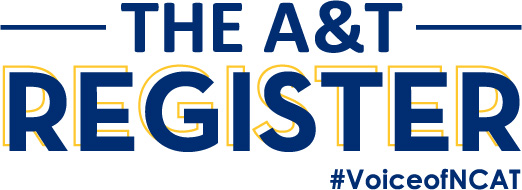The hip-hop class at A&T is going strong in its first semester on campus. The class is taught by Professor Bryon Turman of the English Department.
“I think it’s going really well right now. Students seem to be doing the reading; they seemed to be tuned in and they seem to be interested in the subject matter,” Turman said.
The biggest challenge is not having a book for the course, Turman said. “It’s a lot of packets and the students are working with me on that.” Packets include the lyrics to hip-hop songs.
Another challenge Turman said he faced was “just making sure this was an academic course”.
“I had some major concerns that students would see it as, an easy ‘A’, and then shut down when they realized it involved some real academic work,” he said.
Turman said that this has not happened so far. He is also hopeful that he will not encounter that problem in the future.
Matthew Melvin, a senior psychology major, feels that the class is positive overall.
“We are able to see the origins of hip hop – rather it’s Western European, West African, and African American all culminating to a certain base of hip hop,” he said.
The class is comprised of mostly female students. Turman explained the push-pull concept that is evident in hip hop music and culture.
The push is African Americans being pushed towards “white culture” or mainstream culture. The pull is the African Americans pulling towards their own culture as African Americans.
“I always tell my freshman students especially the males that you will mess around and disappear from this university,” Turman said.
He tells the juniors and seniors that if they do not believe him just look around now and think about all the young men they used to hang out with freshman year that are no longer students at A&T.
“Conversely, sisters will mess around and have two babies take one or two classes a semester and still graduate,” Turman said. “Brothers will make one baby, drop out of school, never graduate, and don’t take care of their baby.”
Turman said in most of his freshman classes there is a 50-50 ratio of males to females.
“By the time I get to the upper level classes it’s mostly female,” he said.
He uses the example to explain to his class that it is a constant push-pull effect in African American society.
“It is the same double consciousness that W.E.B Dubois talked about,” Turman said.
The class brings in everyday life examples that allow the students to relate to the subject matter. Hip hop is a multi-billion dollar industry. The students need to know the origins of the art form to know what to expect of it in the future.
A student asks Turman, “Is the push-pull affect the reason for many artists selling out or going commercial?”
“Artists want to make a living off of their art,” Turman said. “That is an example of push-pull because they want to survive in the main stream society that is the push. The pull is the artist wanting to remain true to his or her art.”
The example of 50 Cent was brought up. The rapper debuted making music for the streets, the students concurred. Now he makes things that sound the exact same but sell massively.
“We are going into things like deejaying, MCing, Turntablism, music, break dancing, and actually rapping. So, you get to see a good mix so the class is definitely positive,” Melvin said.
- Lenita Williams
